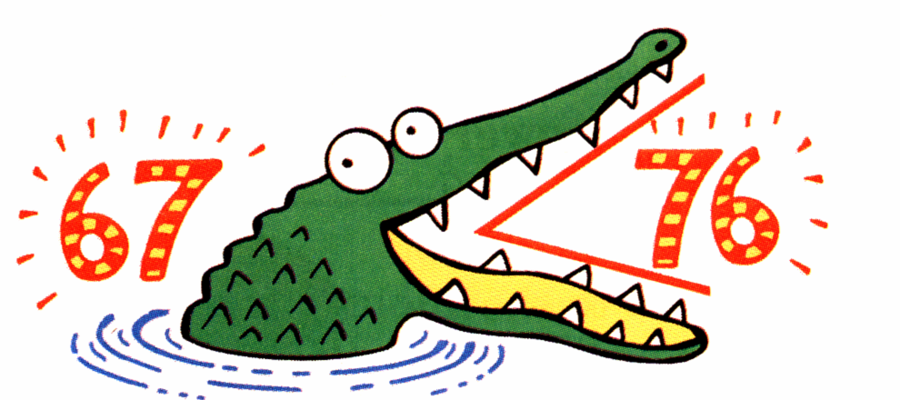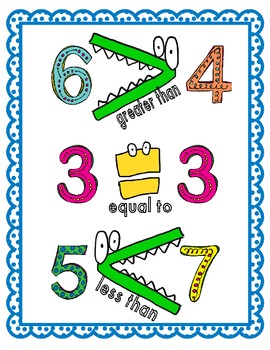
The alligator always wants to eat the larger number of fish, so whatever number the mouth is open toward is the larger number.

One of the best ways to memorize the greater than and less than signs is to imagine them as little alligators (or crocodiles), with the numbers on either side representing a number of fish. All of them look similar, with the exception of the “does not equal” sign. Though the greater than and less than signs have clear meanings, they can be kind of hard to remember.
#Greater than less than equal to comparison cards how to#
How to Remember Greater Than and Less Than Signs Now we'll finally get to talk about why all these photos are of crocodiles. Greater than or equal to-the number on the left is greater than or equal to the number on the right 2 or 3 ≥ 2ĭoes not equal-the number on the left does not equal the number on the right 2 ≠ 3 Less than or equal to-the number on the left is less than or equal to the number on the right 2 or 3 ≤ 3

Greater than-the number on the left is greater than the number on the right 3 > 2 We’re all familiar with the equal sign, “=” at this point in math. Hence the name “inequality” means that two things are not equal. Inequalities are math problems that don’t resolve with a clear “equals” answer-instead, they compare two things, demonstrating the relationship between them rather than showing that one is equal to another. What Are Greater Than and Less Than Signs For? Not knowing what the signs mean may make your math homework feel something like this. In this article, we’ll be talking about what inequalities are, how they’re represented, and how to remember which sign means what.

But these symbols are very useful, because they help us show the relationship between numbers or equations in a way that doesn't just say that they're equal. Matches string values by using the wildcard operators ? and *.ĭetermines whether a numeric or date value is found within a range.ĭetermines whether a value is found within a set of values.What do those little sideways carat symbols mean? They're inequalities! Inequalities can be difficult to get a handle on, especially because the greater than and less than signs look so similar. You use the special operators to return a True or False result as described in the following table.ĭetermines whether a value is Null or Not Null. You use the concatenation operators to combine two text values into one.Ĭombines two strings to form one string and propagates null values (if one value is Null, the entire expression evaluates to Null). Returns True when either Expr1 is true or Expr2 is true, but not both. Returns True when both Expr1 and Expr2 are true, or when both Expr1 and Expr2 are false. Returns True when either Expr1 or Expr2 is true. Returns True when Expr1 and Expr2 are true. Logical operators are also referred to as Boolean operators. You use the logical operators to combine two Boolean values and return a true, false, or null result. Because null represents an unknown value, the result of any comparison with a null value is also unknown. Note: In all cases, if either the first value or the second value is null, the result is then also null. Returns True if the first value is not equal to the second value. Returns True if the first value is equal to the second value. Returns True if the first value is greater than or equal to the second value.

Returns True if the first value is greater than the second value. You use the comparison operators to compare values and return a result that is True, False, or Null. Raise a number to the power of an exponent. Round both numbers to integers, divide the first number by the second number, and then truncate the result to an integer.ĭivide the first number by the second number, and then return only the remainder. You use the arithmetic operators to calculate a value from two or more numbers or to change the sign of a number from positive to negative or vice versa.įind the difference between two numbers or indicate the negative value of a number.ĭivide the first number by the second number. Note: Beginning in Access 2010, the Expression Builder has IntelliSense, so you can see what arguments your expression requires.


 0 kommentar(er)
0 kommentar(er)
